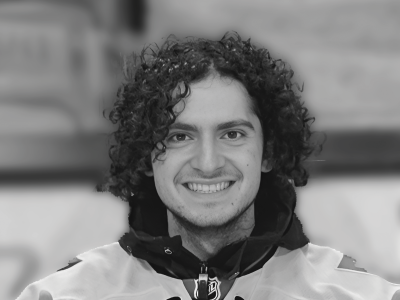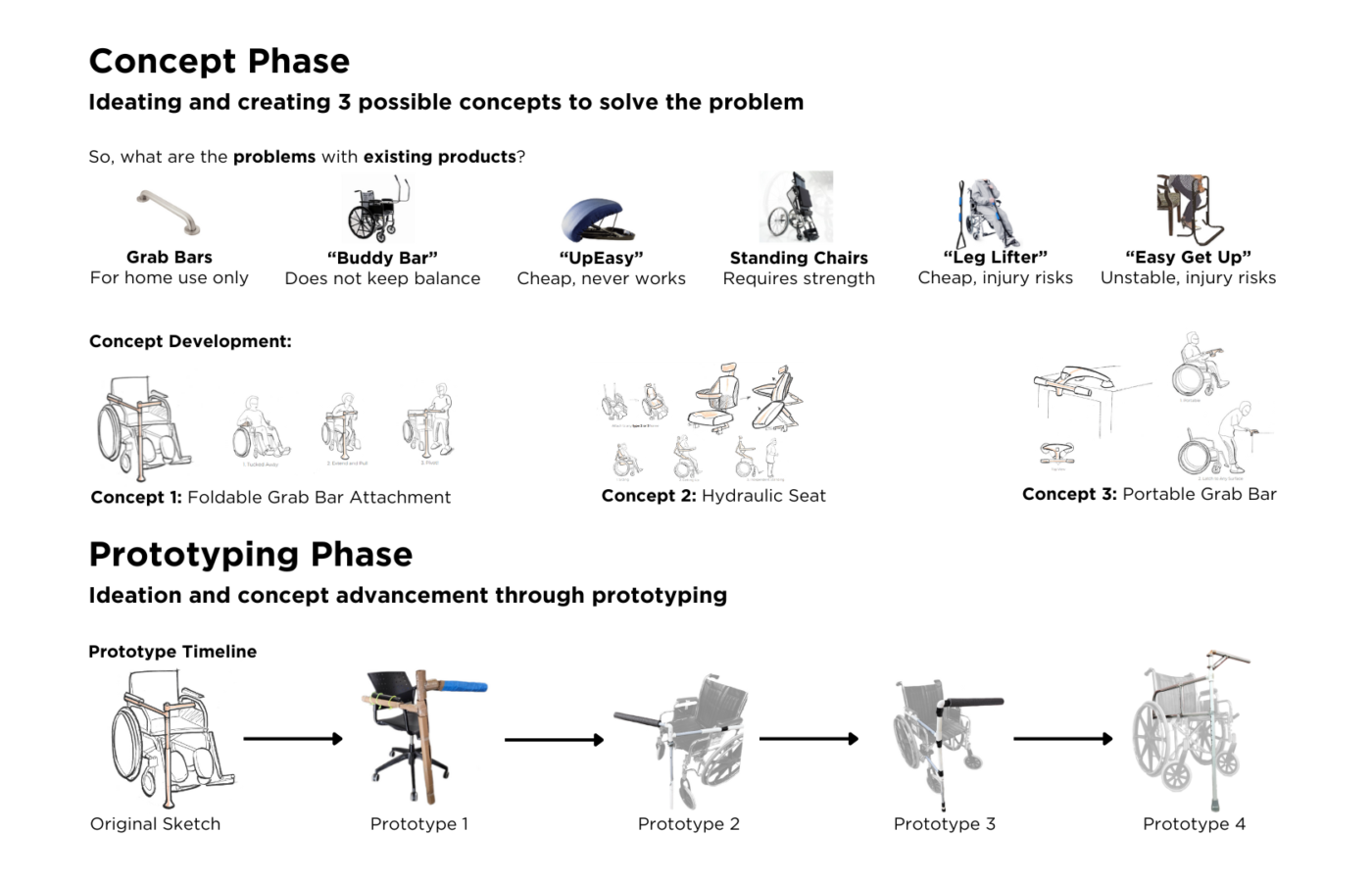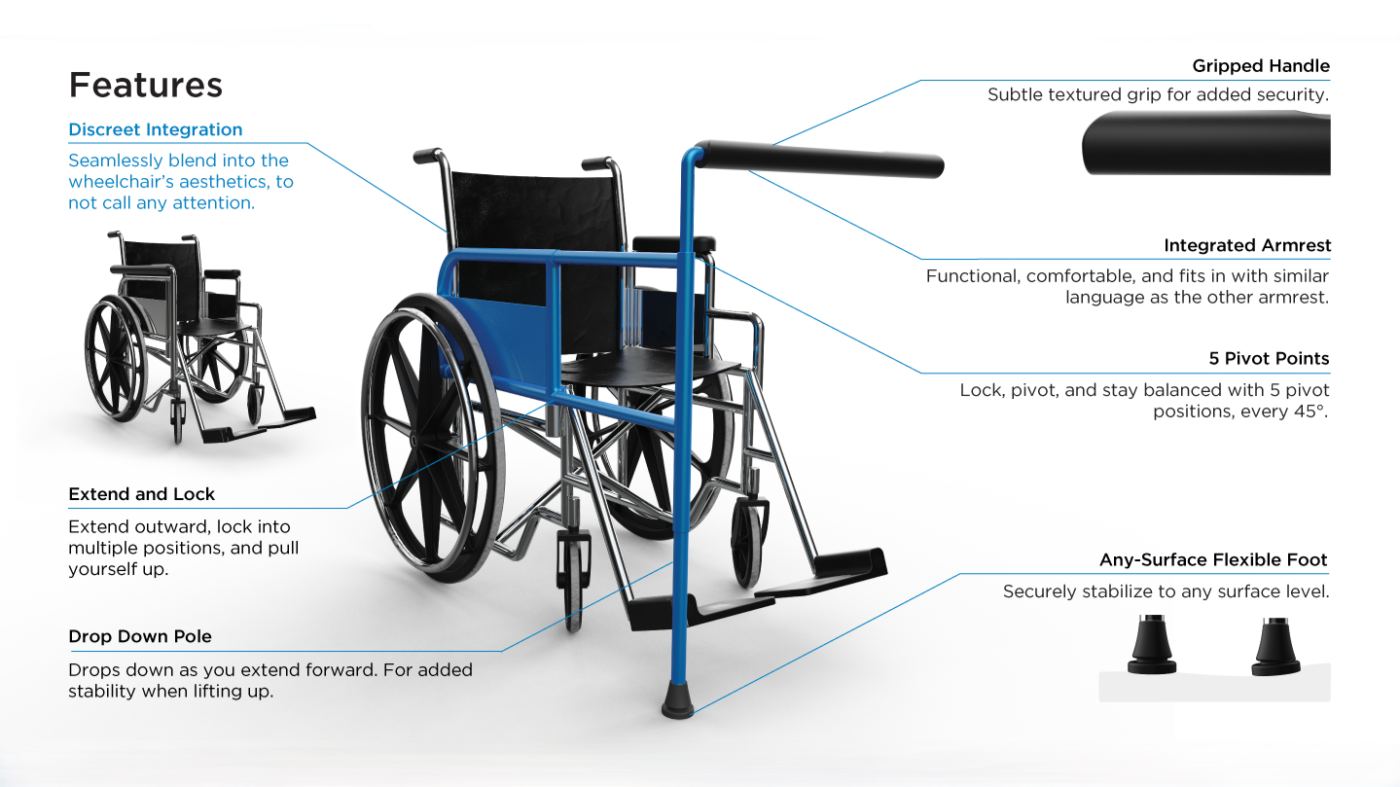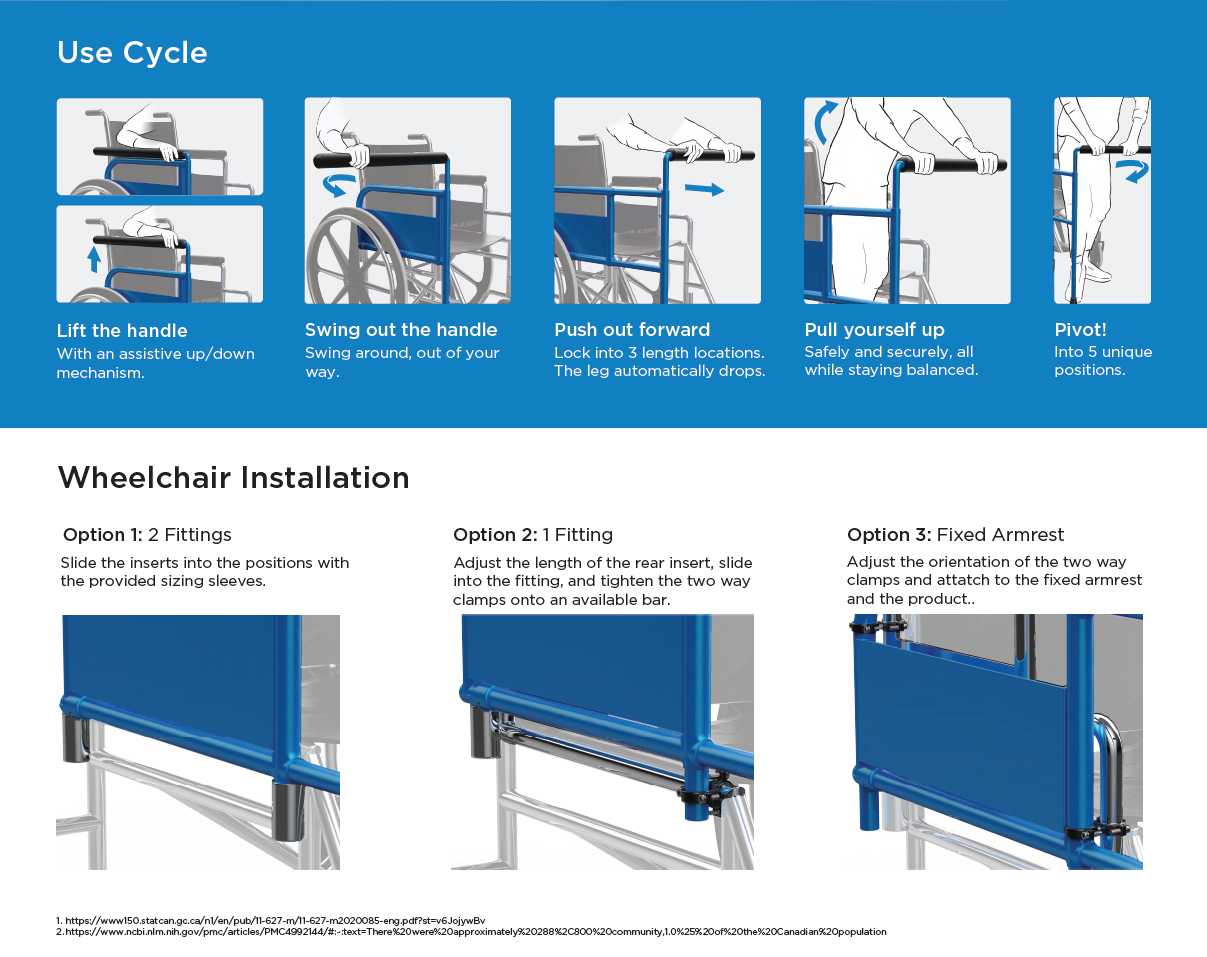
Nicco Timpano’s capstone project, UpLift, was the Canadian National winner of the James Dyson Award. Nicco was selected from 50 inspiring entries.
UpLift
The UpLift is a wheelchair attachment that brings independence and confidence back to low-strength elderly by blending in as an armrest, and expanding to become a portable grab bar, allowing them to freely get up and down from their wheelchair with ease.
 |
INSPIRATION |
One day in the grocery store, I noticed an elderly lady in a wheelchair struggle to get up on her own to grab a tomato. When she got up, she needed to fall onto the nearest ledge for balance support. Once she got what she wanted, she struggled to turn around to see where her wheelchair was. To get back into her chair, she needed to take a “leap of faith”, dangerously pushing herself back into her wheelchair, which could have led to numerous injuries if the slightest thing had gone wrong. At this point, I knew something could be done to make this a more safer and enjoyable experience for anyone in a wheelchair wanting more independence. |
HOW IT WORKS |
The UpLift is made to be as simple as just standing up. Whenever a user in a wheelchair would need assistance getting up, all they would need to do is lift the handle, swing it towards themself (which would lock into position), and start pushing the handle forward to start activating the telescoping frame. As the frame telescopes forward, a support foot drops downwards. Once the user has pushed the frame to the end position, everything locks into place, and the user can easily lift themselves up, while staying balanced the entire time, with the handle acting as their portable grab bar. If they need to get to a position on an angle, the handle can pivot into various 15-degree incremental positions. Once they sit back down, all they need to do is simply lift the handle, pull it towards themselves, and then swing the handle back into the armrest position. |

DESIGN PROCESS |
To first come up with a concept, I needed to look at the market to see what worked, and what did not. I even went on an empathic testing journey, putting myself in the shoes of my user. The most effective item was a grab bar, but it lacked one feature: portability. From there, I came up with the idea of a portable grab bar attached to the wheelchair. I started with some basic sketches but realized quickly that this was a project where the main focus was design through prototyping. It was function first, and to do that, I needed to prototype and test all the time. I went through four main prototypes, all serving their own need and increasing in fidelity, going from cardboard, PVC, and then to metal. The metal one was used the most, as it was created for user testing, weight-bearing purposes, and fitments. After prototyping, it was all about the small refinements, and finding out all the inner mechanisms. These were done through simple foam-core mockups, to full-on computer simulations. One of the most important parts was finding out how it would fit different wheelchairs, which was done by researching the differences in wheelchairs to find a main common ground to work with to make this an off-the-shelf product. The last step was to finalize everything into a cohesive 3D model. |

HOW IT IS DIFFERENT |
The UpLift is almost in a league of its own, with only a few products being able to function similarly. Yet, they miss the mark on one of three things: portability, actual functionality (meaning not something cheap that breaks on the first go), or being compact/discreet. Items on the market have either only one, or sometimes two of these boxes checked, but never all three. One of the absolute most important things about The UpLift is its look and feel. The whole point of it is to be compact, concealed, and to blend in with the design language of the wheelchair (while still prioritizing function). It is meant to not call attention to itself and to make it look like there is almost nothing there at all, so the user can go about their daily life, not worrying about being held back by themselves, or the worry of needing something to help them get up. It checks off all three boxes, making it stand out from anything that could be considered a competitor. |

FUTURE PLANS |
In terms of development, I am hoping to first enhance and continue evolving some of the more technical aspects of the design, which would be to take The UpLift through engineering consultations, vigorous testing, and certifications. Then, I want to focus on truly making this into a real-life product, available to anyone who needs it. Countless individuals have told me how much potential it has, and how crucial this could be, and not just for low-strength elderly. With that, I would need to begin with patenting and IP protection. What is truly important is helping people live their daily lives, and I believe that can be done with The UpLift. |
Other Links: